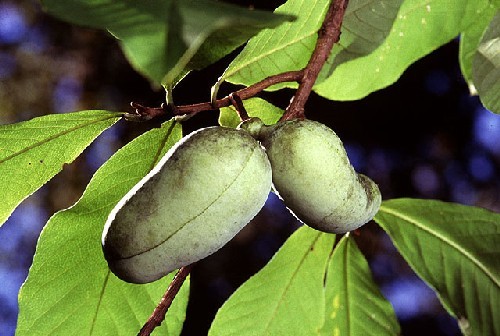In the “Mosquito Flats” neighborhood devastated by the historic 2008 flood in Iowa City, Iowa, can an orchard of pawpaw trees lead to a revival of agroforestry and a food hub along the Iowa River?
As part of Iowa City’s regenerative city initiative, nationally recognized Red Fern Farmers Tom Wahl and Kathy Dice led a special Ecopolis Forum on April 4, 2016 at the Iowa City Public Library, “From Mosquito Flats to Pawpaw Patch, Rethinking, Re-envisioning, Replanting Orchards in Iowa City.”
“Pawpaw trees are quite flood tolerant, and I would expect them to do well near the bank of the Iowa River in Iowa City,” Wahl told me. “There is a wild stand of pawpaws on the bank of the Iowa River about 30 miles downstream from Iowa City, and it has been there for more than 150 years.”
Along with its exotic taste and health benefits, the pawpaw fruit has been considered a “tropical fruit for temperate climates.” Bon Appetit Magazine recently called it the “best American fruit you’ve never eaten.”
Until the 1950s, the Mosquito Flats served as a natural wetlands and rented farm land.
Caving in to the pressures of local developers, the Iowa City Council allowed the flood plain to be developed in 1959 as Parkview Terrace.
Iowa naturalist Connie Mutel wrote in A Watershed Year: Anatomy of the Iowa Floods of 2008, “were living with a false sense of security.”
Today, the Mosquito Flats area is a depopulated district.
Note from Storm: Pawpaws are prolific here in northern Virginia, where I live. My wife and I greatly enjoy eating them every summer during our hikes along the the Potomac River.
Photo credit: www.livescience.com
See article about Iowa City’s “regenerative city” initiative.

